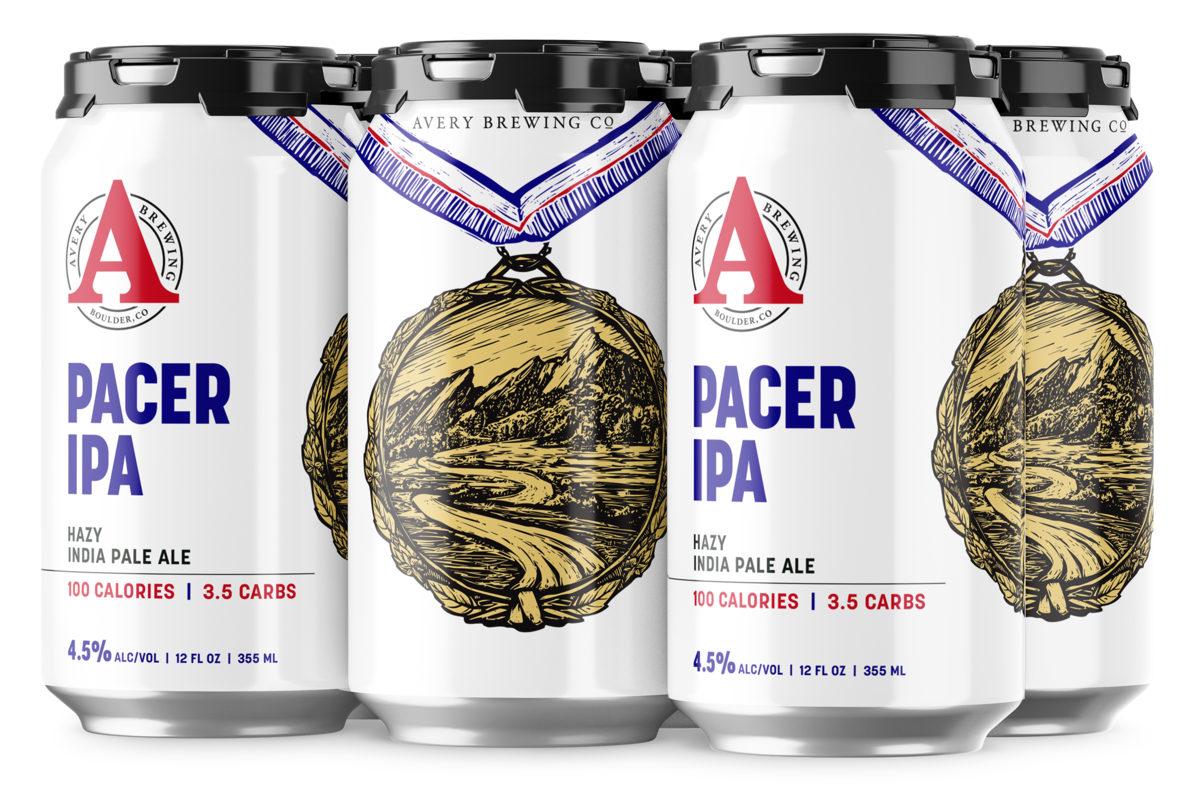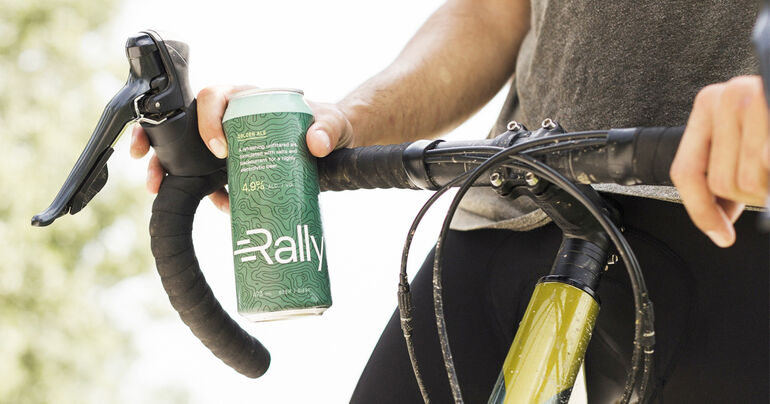Start 14-Day Trial Subscription
*No credit card required

The Rise of Functional Beers
As a beer connoisseur, I wonder why I drink. Often, it’s for the flavor. Sometimes, it’s for the buzz. Not infrequently, there’s some utilitarian reason: a hot toddy for a cold, or a cold lager after a long bike ride. From a historical perspective, drinking beer for the flavor is a surprisingly recent phenomenon. Throughout the long, complicated history of beer consumption, utilitarian motivations appeared much more frequently than connoisseurship. But all old things become new again, and modern brewers are returning to the utilitarian roots of beer, producing innovative brews that combine function and flavor. In our exploration of the world of “Functional Beers,” we’ll ask what beer could be good for, explore some innovative beers and trends, and confront the constraints functional brewers face.
Functional claims: A Federal perspective
In researching this article, I spoke to many brewers. Each conversation began with a disclaimer including some variation of, “I’m not allowed to say beer is good for you.” Caitlin Landsberg, of Sufferfest, said it best: “I will never tell you that alcohol is good for you!”
Beer-related interviews are typically jovial affairs, but the source of this concern is a serious one. The US Department of the Treasury Alcohol and Tobacco Tax and Trade Bureau (TTB) regulates the “beverage alcohol” industry, and expressly prohibits “‘Health-related statements’ defined as”... any statement related to health and includes statements of a curative or therapeutic nature that, expressly or by implication, suggest a relationship between the consumption of alcohol, malt beverages, or any substance found within the malt beverage, and health benefits or effects on health.The TTB spends no less than 9 paragraphs of the Code of Federal Regulations expounding on this, so, you can tell it’s a serious matter. For the record, none of the brewers mentioned in this article made any claims, either directly, or by implication, related to purported health benefits of their products.
How we got here is beyond the scope of this article. I will point out that a puritanical attitude, and the legacy of Prohibition, continue to haunt the industry.
Defining a Functional Beer
What exactly is a “functional beer?” Doubtless, every beer whets our whistles (and pays the salaries of beer writers) and therefore has a function. According to Caitlin Landsberg, “When I launched Sufferfest, I had the idea of ‘four plus one.’ You know, water, yeast, hops, malt, plus...something else. It’s that 5th thing that adds a special character.” This concept of a “5th element” is a useful, working definition of a functional beer, and, as we’ll learn, this “5th element” need not even be an ingredient at all!

Beer For Athletes
As a long-distance cyclist, I’m familiar with the pleasure of a beer after a long ride. This summer, I joined my friends on a 40-mile bike ride to a lake. After a day in the hot sun, peddling up endless hills, dealing with uncertainty surrounding the pandemic, my nerves were frazzled. I pulled a precious sample of a Sufferfest FKT from my pannier and tipped it back. Within 10 minutes, I felt magically restored. Relaxed, not drunk, rehydrated and refreshed. Landsberg, CEO of Sufferfest, built a beer brand around this moment. Her assessment of her own motivations at the time help convey this feeling: “I was looking for the ultimate finish line beer. There is something completely sacramental about that post-race beer.”
Alan Wood, Co-Founder & CEO of Rally, had a similar experience, “I set out to bike the Butter Tart 700, by myself in 2019. I had a lot of personal stuff and needed a few days to myself… So, I was biking, drinking beer at night in small pubs, and I thought that we should have a beer that should support the adventure community.”
Wood, Landsberg and I have all had similar experiences. Both brewers are too smart to claim that any particular ingredient in their beers (The red currant? The added electrolytes?) will have any particular effect, but the fact remains that many athletes have enjoyed a soul-deep refreshment with a beer or two.
A Historical Perspective
Of course, beer and exertion have a long, intertwined history. Mika Rissanen’s “Beer breaks during the Tour de France: Some observations on beer and cycling in the early 1900s” cites the athletic advice of “John Badcock, a pseudonymous sportswriter, had advised athletes in 1828 that ‘with respect to liquors, they must always be taken cold; and home-brewed beer, old but not bottled, is the best. A little red wine, however, may be given to those who are not fond of malt liquor.’”
The essay features an amazing image of early Tour riders, covered in filth after riding hundreds of kilometers, enjoying glasses of local beer mid-ride. This practice reflected the medical wisdom of the time, which regarded alcohol as a “stimulant.” More practical than prevailing medical wisdom, clean water was scarce in those days, and beer was less likely to be contaminated and more likely to be cold.
Booze is BAD for performance
We now know, contrary to Mr. Babcock, that beer does not provide significant advantages during most endurance events. High-ABV beers contain enough alcohol to create a net dehydrating effect, and even the modest amount of alcohol in beer is enough to degrade motor performance. Of course, there were early hints that this might be the case. In the 1904 Summer Olympics, for example, runner Thomas Hicks was dosed with brandy (and a hint of strychnine), which resulted in him collapsing with seizures. He did, however, win the race.
Could beer be good for recovery? A case for beer as a “recovery drink.”
For elite athletes of all stripes, the recovery phase is as important as the exertional phase. During recovery, the body repairs the damage done during exertion. There are suggestions that the individual constituents of beer (especially low-ABV products) could play a role in enhancing recovery, thereby creating conditions for improved future performance. Based on a review of the available literature, here are some plausible explanations for these effects:
B Vitamins: Beer contains complex B vitamins that are produced by the metabolism of brewer’s yeast, a widely recognized source of several forms of B vitamins. These vitamins play an important role in metabolizing fats and carbohydrates, and are thought to play an important role in athletic recovery.
Water: Of course, beer is mostly water. Endurance athletes require significant quantities of water to flush metabolic debris from their bodies. Too much beer can dehydrate, so, anything exceeding modest consumption wouldn’t be a net benefit.
Protein: Even mass-market lagers have at least a gram of protein a can, with craft beers likely containing 2-3 times this quantity. Protein is vital to repairing muscles during athletic recovery, and although beer doesn’t have as much as a burger, it can certainly be a part of the total protein required.
Carbohydrates: Carbohydrates are also essential for athletic recovery, where it builds the body’s store of glycogen, providing the energy to compete again. As a dense source of carbohydrates, beer is perfect in this regard, though anything exceeding modest consumption can create a belly incompatible with athletic expression.

A Scientific Perspective
The scientific perspective on beer as an athletic recovery drink ranges from modest to positively rosy. One study finds that “A low alcohol beer with added sodium offers a potential compromise between a beverage with high social acceptance and one which avoids the exacerbated fluid losses observed when consuming full-strength beer.” German researchers have conducted enough work on the topic to begin providing their Olympic athletes with beer as a recovery beverage. The beer has reduced alcohol and contains added electrolytes, making it perhaps the first explicitly functional beer used as part of a national sports program.
It's All in the Electrolytes
Josh Rapp, Head Brewer at Avery Brewing, categorically refuses to make any health claims related to his beer. However, with some prying as to the ingredients of their El Gose, he mentioned that, “Our El Gose has both potassium citrate and Roland's Sea Salt in it as of fall last year. The Go Play IPA also had both potassium citrate and sea salt in it as well.” He also noted that the added lemon technically contains vitamin C as well. What Mr. Rapp can’t say, and that I will, is that both potassium and sodium are important electrolytes, and both are depleted by sweating during athletic endeavors.
Technically, beers with notable electrolyte contents meet many of the specifications outlined in the studies above, though it would be illegal for the manufacturer of this product to mention this.
Canadian laws are slightly stricter in this regard. Not only are Canadian brands not permitted to make health claims, they can’t technically add some of these “5th ingredients.” Allen Wood, of Rally, notes that “in Canada, it is illegal to fortify an alcoholic beverage with vitamins or minerals. You can’t add it after the beer is done. But… if the ingredients are incorporated as part of the brewing process from the beginning that is a different story.”
Other Functional Benefits?
By far, most of the conversation about the “benefits” of beer happens in the context of exertion or athletic recovery. However, some recent research suggests that beer might have other potential benefits on offer.
Beer and sleep
Any craft beer connoisseur is acquainted with the soporific effect of microbrews, especially those of the higher ABV variety. The scientific findings are mixed though. The overwhelming consensus is that excessive alcohol intake, though it has an initial sedative effect, damages the architecture of sleep.
There is some evidence that beer isn’t as disruptive to sleep architecture as hard liquor, which is higher in alcohol content. Also, on the plus side, there is convincing evidence that hops can actually improve sleep. A study reported in the PLOS One found that women who drank non-alcoholic beer with hops at dinnertime showed improvements in their sleep quality and reduced anxiety.
Is beer functional because of what it doesn’t have?
The traditional understanding of a “functional” beer is that it has something extra in it. Geoffrey Pedder, Founder and Managing Partner of Zelus Beer Company brought up an important and paradoxical perspective during our conversation. He mentioned that several “active lifestyle” beers are gluten-reduced, ostensibly as a nod to health-conscious consumers that imagine that gluten impedes them in some way. Of his own beers, he wondered aloud if, “it’s more important that our products are high in flavor, and low in alcohol. Actually, our lowest is 3.75% ABV, and getting a good flavor at that low ABV is quite difficult.” Of course, Pedder isn’t making any specific health-related claims, but it does bring up the notion that certain varieties of beer can have different “uses,” based on what they don’t include.

Beer for other conditions
Guinness’ famously long lived “Guinness is good for you!” advertising campaign promoted the notion of their product as a potential treatment for a variety of conditions, fatigue and anemia among them. As it turns out, Guinness only has about 3% of an adult’s dietary iron requirement, making it a poor anemia treatment. The addition of calcium to the mash to replicate the profile of Dublin’s alkaline water probably provides some indirect health benefits, though, especially to the skeletal system. Minerals aside, another exciting area of research involves the polyphenol components of darker beers like Guinness, which may have positive effects on the blood vessels and the immune system. There is much work to be done here.
Happiness - the ultimate functional ingredient
In all of my interviews, a common theme emerged. Wood brought it up by saying, “the community and cultural aspect of beer is quite important – the notion of celebrating your wins. It simply feels good.” Rapp expanded on this notion, musing that, “For me, beer has a very positive mental and psychological aspect. That can’t be discounted. Getting some exercise, then rewarding yourself with a beer feels good. It brings the accomplishment full circle. Why does a beer taste better after a run or a bike ride? It’s probably not just the hydration, it’s giving yourself a reward.”
Despite strict and sometimes contradictory regulations, alcohol and health are inextricably intertwined. The research on beer, both with, and without “functional” additives, ranges from discouraging to modestly encouraging. Without consensus from the experts, beer connoisseurs will have to look away from specific ingredients, and rely on their own experiences to discover the ultimate function of beer: Happiness.
Tasting Notes / Style Studies

Rally Golden Ale
Format: 16-oz can
ABV: 4.9%
Tasting Notes: Pours a hazy, glowing gold with a poofy white head. Aroma is sweet, with some orange zest. The first sip is malty and sweet, with the faint butterscotch character that immediately calls out “golden ale.” The body is quite thick, and the aftertaste boasts an admirable tart quality. I gratefully downed this after a long snowshoe.

Sufferfest FKT Pale Ale
Format: 12 oz can
ABV: 5.5%
Tasting Notes: Pours a pale amber with a modest white head. Aroma has citrus oils, blackcurrant and bright hops. The first taste is sly and subtle. There is a prominent malt character, tart berries and a prickle of hops. After a long, hot bike ride (this summer), this was a welcome bit of rehydration.

Avery Pacer IPA
Format: 12 oz can
ABV: 4.7%
Tasting Notes: Pours a very pale yellow with a thin lace of white foam. Aroma has vibrant grapefruit. The initial flavor has a pleasant hoppy bite, and a swirl of citrus, passionfruit and guava notes. The body is quite thin and quenching. The aftertaste features more tropical fruit and hints of sweet malt. After a late-night fat bike mission, this satisfied something deep in my soul.

Zelus Beer Company Competitor IPA
Format: 16-oz can
ABV: 4.7%
Tasting Notes: Pours a straw yellow with a thin white head. Aroma has lemon zest, coriander and pine. The body is surprisingly thick with a piquant, pleasant salinity. The hops are an excellent counterbalance to the brothy richness of the salt. For all the mouthfeel, the aftertaste is amazingly light and fleeting. After a long run, this is both relaxing and restorative.

Harpoon Rec. League
Format:16-oz can
ABV: 4.0%
Tasting Notes: Pours a hazy golden with a rocky, off-white head. Aroma has pine, peaches and apple. The first sip is like a “lite” NEDIPA - lots of hops, fruit-forward, with a thinner, more quenching body. The body thickens a bit as it warms, and there is a subtle salinity mingled with the crisp malt character in the aftertaste. After an 85-mile bike tour, I had to remind myself to slow down and actually taste this delightful beverage.



